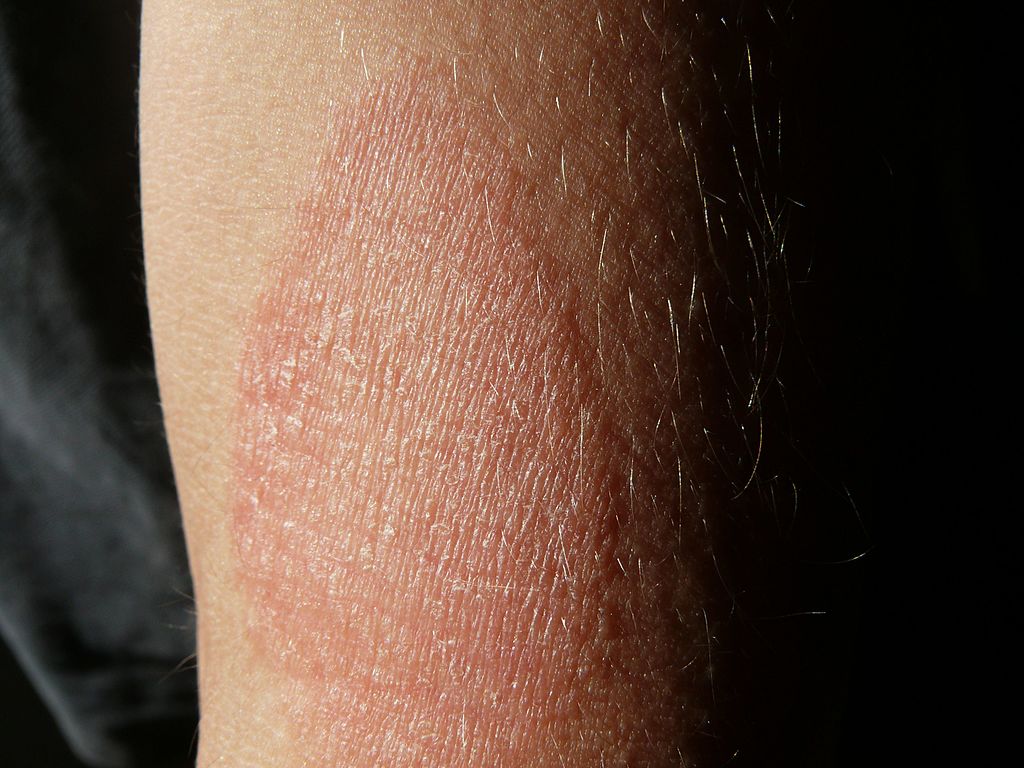The results of studies by scientists in Korea and Australia suggest that bee venom (BV) may represent an effective treatment for atopic dermatitis (eczema), one of the most common chronic inflammatory skin diseases. Tests in mice showed that bee venom and its main constituent, melittin (Mel), effectively dampened inflammation and skin thickening in a mouse model of induced eczema, and reduced levels of inflammatory chemokines, cytokines, and mast cell infiltration.
![Bee venom [Beekeeping]](https://genengnews.com/wp-content/uploads/2018/10/Awp6_2018_KeepingBeeOrg_HoneyBeeVenom2391505121.jpg)
Eczema causes skin lesions, itching, and dry skin, and is characterized by an impaired epidermal barrier, abnormal immune response, and immunoglobulin E (IgE)-mediated allergies. The multifactorial disease involves a complex inflammatory process with both innate and adaptive immune responses. Genetic and environmental factors are believed to contribute to skin barrier dysfunction and immune dysregulation, but the exact cause isn’t known. “Two competing hypotheses are generally presented regarding the pathogenesis of AD,” the authors explain. “The first proposes a primary immune functional disorder, resulting in IgE sensitization and a subsequent epithelial-barrier obstruction. The second suggests that a disturbance of the skin barrier, either caused by an intrinsic genetic deficiency in epidermal skin barrier formation or as a result of an environmental transition, leads to atopic disease.”
Current therapeutic approaches against eczema include topical glucocorticosteroids, emollients, phototherapies, calcineurin inhibitors, and immunosuppressants. While these can reduce inflammation, they also cause side effects, the team adds. As alternatives to pharmacological or immune-modulating treatments, scientists are also studying natural therapies based on herbs, ginseng, and snake venom. Bee venom has been used widely in traditional medicines for various diseases, but not yet, against eczema, the authors suggest.
Bee venom produced by honeybees (Apis mellifera), contains a range of peptides, enzymes, and nonpeptide components. The peptide melittin is the major component, and represents up to 50% of the dry weight of bee venom. Prior studies have shown that bee venom and melittin possess anti-inflammatory, anti-rheumatic, antibacterial, antiviral and anticancer properties, and also act to reduce pain and aid immune modulatory activity. However, bee venom hasn’t been studied to any great degree against eczema.
The Catholic University of Daegu team, and colleagues in Korea and at the Charles Sturt University in Australia, tested the effects of bee venom and melittin both in an in vitro atopic dermatitis-like skin disease model, and in an induced mouse model of the atopic dermatitis, in which animals develop characteristic physical and histophathological signs of the condition as a result of exposure to 1-chloro-2,4-dinitrobenzene (DNCB) sensitization and challenge.
Atopic dermatitis features both chronic and acute phases, which result in either Th (T helper)1, or Th2-dominant inflammation. Th1-specific cytokines IFN-γ and TNF-α activate mononuclear phagocytes including macrophages, whereas IL-4 is associated with the Th2 response, the authors explain. Results from their experiments in the DNCB-exposed mice showed that topical treatment using bee venom and melittin reduced DNCB-induced inflammation, mast cell infiltration, and degranulation.
The treatment also reduced serum levels of DNCB-induced IFN-γ, IL-4, IgE, and TSLP (thymic stromal lymphopoietin), and led to lower levels of IFN-γ and IL-4 expression in the skin of the DNCB-exposed mice. “IgE production is associated with a predominant Th2 cellular response,” the authors write. “Our study showed that TSLP and IgE were increased in DNCB-induced AD-like mice, and BV and Mel decreased TSLP and IgE production.” Numbers of CD4+ and CD3+ T cells were similarly reduced in the dorsal skin following bee venom or melittin therapy.
Tests in an in vitro TNF-α/IFN-γ-stimulated human keratinocyte model showed that exposure to bee venom and melittin also improved DNCB-related abnormal epidermal differentiation by restoring filaggrin expression. Further in vitro experiments in the cell model indicated that bee venom and melittin acted on the JAK/STAT pathway – which is known to play a key role in the disruption of the epidermis barrier. “The inhibition of these signaling pathways by BV and Mel could be responsible for the decrease in the production of pro-inflammatory chemokines and cytokines,” the authors suggest.
The studies also indicated that the bee toxin therapy inhibited the exaggerated expression of chemokines and proinflammatory cytokines such as IL-1β, IL-6, and IFN-γ by blocking NF-κB and STAT signaling. “As a result, this study demonstrated that BV and Mel have immunomodulatory activity, and such activity was associated with the regulation of Th cell differentiation, thereby ameliorating the inflammatory skin diseases caused by AD,” the team concludes.
“In summary, this study demonstrated the ameliorating effects of BV and Mel on the DNCB-induced AD-like skin lesions of Balb/c mice and TNF-α/IFN-γ-stimulated human keratinocyte HaCaT cells. BV and Mel reduced inflammatory symptoms in AD-like skin lesions by suppressing the production of Th1/Th2-associated and pro-inflammatory cytokines with a subsequent decrease of CD4+ T cells, mast cell infiltration, and the release of serum IgE.”



